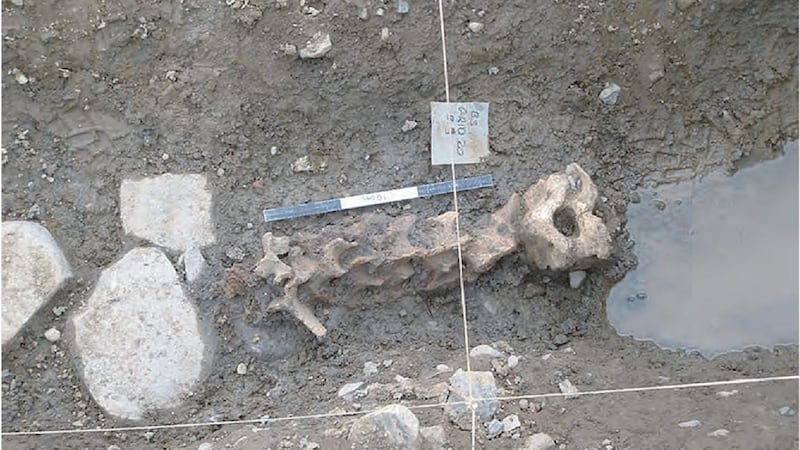An archaeological site in north Dublin with an unusually large collection of cattle remains could potentially change understanding of beef and cattle herding in Europe more than 5,000 years ago.
Data collected from the N2 Kilshane excavation near Finglas by researchers from the UCD school of archaeology and Queen's University Belfast suggests the multipurpose use of cattle for milk, meat and as draft animals was far more complex than previously thought.
The remains of at least 58 individual cattle were recovered from the ditches of an enclosure excavated at Kilshane dating from the late fourth millennium BC in what is known as Atlantic Europe. The site is one of the few with "large faunal assemblages" – where a group of associated animal fossils are found together – to have been unearthed in Ireland.

"This cattle assemblage is providing key insights into prehistoric farming in Ireland, and Europe, right at the time that passage tombs are starting to be constructed. It's giving us a real sense of the communities behind these monuments and how they supported themselves," said Dr Jessica Smyth of UCD school of archaeology.
The discovery not only has implications for understanding how the economy of the communities of Neolithic Ireland functioned, but the larger role cattle husbandry played in their social, symbolic and religious activities, she added.
Important roles
Cattle are widely recognised as having important economic, social, symbolic and religious roles in Neolithic communities in Europe, and it has long been assumed they had similarly important roles in Neolithic Ireland. However, the absence of large faunal assemblages precluded direct comparison with the rest of Europe, where the special status of cattle was strongly indicated by feasting and the practice of eating together.
Dr Fabienne Pigière, a zooarchaeologist in the UCD school of archaeology, who led the Kilshane study, stressed the unusual character of the assemblage compared with feasting remains from other sites.
“Unlike contemporary British or continental sites, the Kilshane assemblage is nearly fully composed of cattle remains. Its analysis shows the importance of sharing meat during this special gathering event and also allows us to investigate the husbandry economy of the Neolithic communities who exploited cattle for milk and as working beasts for traction,” he added.
The “kill-off pattern” found on the bones indicate the bulk of the cattle were of an optimal age for meat production, at about 2½ years. Some aged over three years were also slaughtered, “likely having been kept for milk production or breeding stock, and to be used as draft animals”.
The numerous females identified also confirms the importance of milk production at the time. The unusual predominance of cattle, the lack of bones broken to collect marrow, and the high number of cattle killed at the optimal age for meat production “suggest feasting practices”, according to findings published in the Journal of Archaeological Science: Reports.
The research was undertaken as part of the Irish Research Council Laureate Passage Tomb People project, building on earlier post-excavation analysis funded by Transport Infrastructure Ireland.










